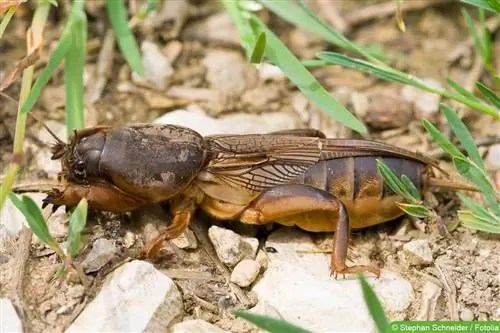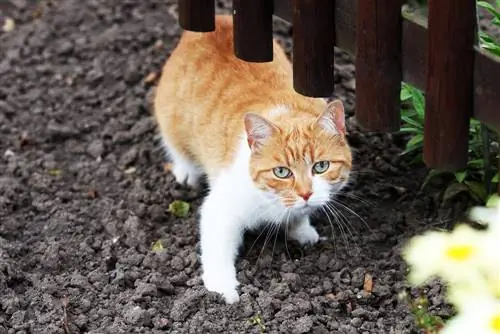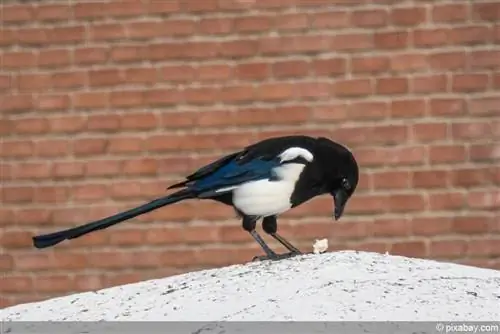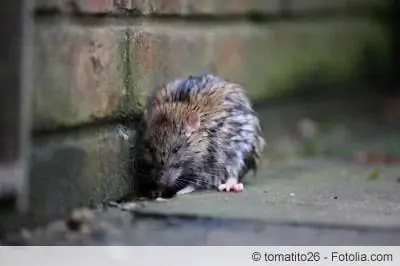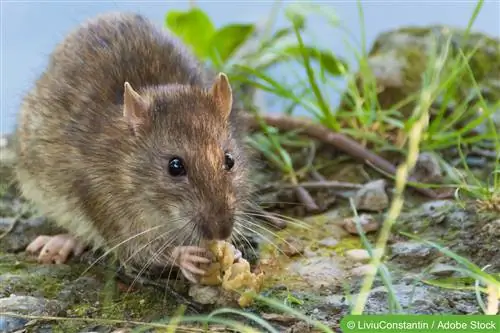- Author admin [email protected].
- Public 2023-12-17 03:39.
- Last modified 2025-06-01 06:48.
Rats transmit dangerous diseases, plunder supplies or make them unusable, gnaw on electrical wires and other cables and, above all, they reproduce extremely quickly. If you have noticed an infestation, it is extremely important to act quickly to limit the damage. However, not all recommended measures are actually effective. Read what really helps.
Rats are cultural followers
There are two species of rats that prefer to settle near humans and benefit from their presence: After all, the animals find a richly laid table in the garden and numerous sheltered shelter options. The brown rat (Rattus norvegicus) is most commonly found in the garden. It grows up to 50 centimeters long and weighs 500 grams. It prefers habitats near flowing water. It doesn't necessarily have to be a river, because brown rats also feel very comfortable in the sewer system.
The brown rat has now almost replaced the much smaller house rat (Rattus rattus), which is why it is on the red list of endangered species. If you notice a rat infestation in the garden, in most cases the brown rat has nested there. If you suspect a mouse infestation instead of a rat, you should take a closer look: domestic rats are often confused with mice.
Tip:
According to federal and state legislation such as the Federal Epidemic Diseases Act, rats are considered he alth pests. If an infestation is discovered, it must be reported to the he alth department in some federal states. In addition, in some places there is a legal obligation to hire a professional exterminator to combat the rat infestation.
How do rats get into the garden?
Black rats in particular prefer to live at our feet in the sewers. However, since the animals reproduce very quickly, when there is a high infestation pressure - a rat population can contain 100 animals or more - they come to the surface to look for new habitat for the surplus animals. They prefer to settle in green areas such as parks and of course gardens, as there is plenty of food and hiding places for the less picky omnivores. Domestic rats, on the other hand, prefer warm, sheltered locations and are therefore more likely to be found inside buildings.
How to recognize a rat infestation in the garden
Since rats are shy animals, you will only see live specimens in very rare cases. If a rat runs across your path in broad daylight, it's only because it can't find enough to eat or the population in your garden has now reached gigantic proportions. This increases the pressure on the animals, which are actually nocturnal, to expand their territory and thus create more living space. Furthermore, brown rats in particular prefer to stay in places with little light where they are difficult to find.
If you come across the following clues in your garden, the likelihood of a rat infestation is high:
Bigger holes
- in the soil, in the composter or in the shed -
Wild rats like to build burrows in the ground, the entrances of which can be quite hidden. They also use their teeth to gain access to insufficiently sealed food sources.
gnaw marks
- on composters, garbage cans and storage bags or elsewhere -
These gnawing marks are mainly found where there is food that cannot be dragged away.
elongated traces of feces
- about in stocks -
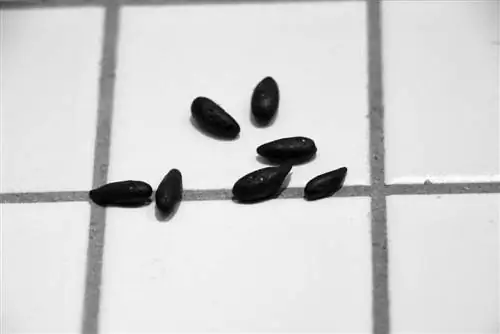
Rodents have settled where rat droppings can be found. Fresh feces are elongated, soft and shiny. Under no circumstances should you touch it with your bare fingers, you could become infected with dangerous pathogens! Be sure to put on protective clothing and remove any feces discovered immediately to eliminate the source of infection.
Dead rats
Where there is a dead rat, there are almost certainly many live ones.
Ammonia smell
If there is a slight or strong smell of ammonia in one or more corners of the garden, you should look for further signs in this area. The unpleasant smell is a typical sign of a rat infestation, as the animals mark their territory with urine.
Tip:
If you clean up rat droppings or dead animals, you should disinfect the area afterwards and - very important! - neutralize the smell. This could attract more animals and thus only increase the problem.
How to get rid of rats
Getting rid of rats effectively is a difficult undertaking. The animals will not leave their territory without great distress as this means massive stress for the animals. They would have to leave their safe land of milk and honey to look for a new territory in the unknown and most likely fight for it with another rat clan. What this means for you: Bring out the hard guns straight away, the faster the better. Make it as uncomfortable as possible for the rats in your garden and increase the likelihood that the animals will run away and never come back.
Cats against the rat plague
Be sure to get one or more cats, although you should stay away from highly bred pedigree cats. Prefer domestic cats that have been raised on farms, as they learn to hunt and kill rats and mice from an early age. A diligent hunter cannot eradicate the rats, but he can keep the plague to a tolerable level.
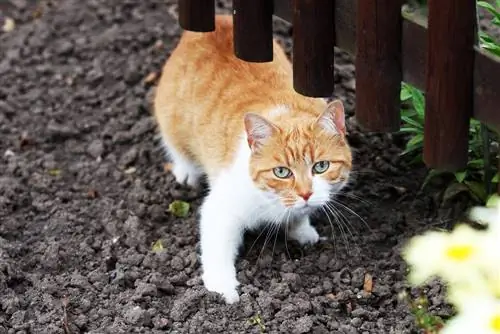
Tip: With free-roaming cats in the garden, however, the bird life must be well protected, as the purring predators also like to kill robins, blue tits and the like. For this reason, it is best to hang nesting boxes and feeding places freely hanging or otherwise inaccessible to four-legged friends. This also has the practical side effect that the rats can no longer feast on bird food.
Do home remedies help against the rat plague?
Of course, non-toxic home remedies would be a wonderful way to get rid of the rat plague, in contrast to the problematic poison bait. Perhaps one of the following options has already been recommended to you or you have already tried the remedy:
- Sprinkle chili or chayenne pepper powder on the paths of the rats
- leave cat litter soaked in cat urine near paths or nest entrances
- Essential oils such as mint or clove oil or cloves are said to repel rats
- Coat paths and nest entrances with turpentine or vinegar
- Lime painting on walls (e.g. in the basement or in the garden shed)
- Setting up ultrasound devices
Unfortunately, the effectiveness of these agents is very limited because, as I said, rats are difficult to get rid of - and they also quickly get used to unpleasant smells and noises (such as those produced by ultrasonic devices). You could only be successful with such methods with a few animals that are not yet properly established and searching for territory.
Chlorine lime is extremely dangerous
You should especially stay away from the chlorinated lime and vinegar mixture, because it is also extremely dangerous for humans. The mixture produces toxic fumes, is corrosive and causes fires. In addition, a chemical reaction - for example with carbon dioxide from the air - can produce highly toxic and deadly chlorine gas. Therefore, please refrain from using this remedy, otherwise it can have bad consequences for you and your family.
Use live and snap traps correctly against rats
If there are only a few animals in your garden, you can catch them with a trap and get rid of them. Even if you are uncomfortable with killing, prefer the more effective snap traps to the supposedly more humane live traps. Using a live trap - where the rats may be released somewhere else - only relocates the problem, not eliminates it.
Traps are placed where the rats move regularly. The nest entrances are ideal, but there are also good places along the paths. Change the locations and bait regularly: rats are very intelligent and quickly draw conclusions between the death of their fellow rats and the trap or piece of salami. It is also an advantage to alternately use different looking traps. If possible, use plastic rat traps as they are easier to clean and easier to handle.
How to use a rat trap correctly:
- use bait known to rats
- Animals disdain unknown food
- Sausage, cheese, bacon and nut nougat cream are well suited
- Set up traps in the area of droppings and walking tracks
- Choose a location so that children and pets cannot get in
- Check and empty traps regularly
Tip:
Do not touch trapped animals without protective clothing and clean the trap thoroughly after use.
When and how you can use rat poison
The greater the infestation pressure, the less effective measures such as snap traps, household remedies etc. are. If there are a lot of rats on your property, often only poison can help. However, you must follow a number of rules and safety instructions in order to keep the risk of poisoning for children and pets as low as possible:
- Never place bait freely
- always inaccessible to children and pets
- Use a lockable bait box to lay out
- only use preparations with the active ingredients coumatetralyl, chlorophacinone and warfarin or sodium warfarin
As long as the manufacturer points out on the packaging that the 'rat poison may only be used by people with proof of expertise, every product is generally freely available for sale. However, according to the law, you are not allowed to use many of the biocides on offer yourself; you would have to hire a professional - i.e. an exterminator or pest controller. In any case, this approach is preferable to acting on your own, as handling rat poison is extremely dangerous, and not just for the rodents.
How to make your house and garden rat-proof
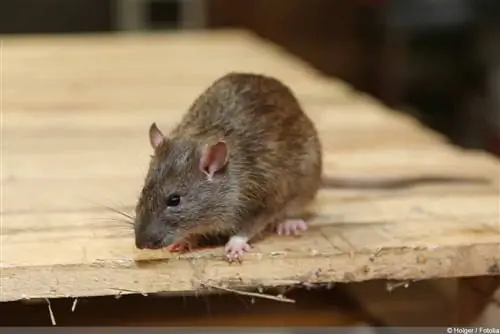
To ensure that rats do not settle in your garden in the first place or that the animals do not return after a plague has been successfully eliminated, you should tidy up your garden thoroughly and eliminate hiding places and sources of food. These measures have proven to be useful:
- do not throw leftover food in the compost
- no kitchen leftovers such as cooked food and meat in the compost
- no fruit and vegetable residues in the compost
- Mix the compost well
- Avoid open compost heaps, close them well
- closed quick composters are usually rat-proof
- Collect fallen fruit promptly
- Keep animal enclosures (chickens, ducks, pigeons) clean and clean regularly
- do not leave leftover animal food outside or in the stable
- keep all supplies and animal feed well sealed
- Protect bird feeders with special cuffs
- Do not dispose of leftover food in the toilet, it belongs in the trash.
- Seal garbage cans well and odor-tight
You should also avoid untidy corners in the garden, for example, be sure to tidy up and put away piles of wood and the like. Rats like to use such places as protected nesting places. For the same reason, stacked firewood should be checked regularly; rodents also like to hide here. Furthermore, there should be no loopholes in the house; rats squeeze through even the narrowest holes and get into the house. Sources of danger include open and unprotected patio and cellar doors, cellar windows, holes in the masonry or downpipes.


